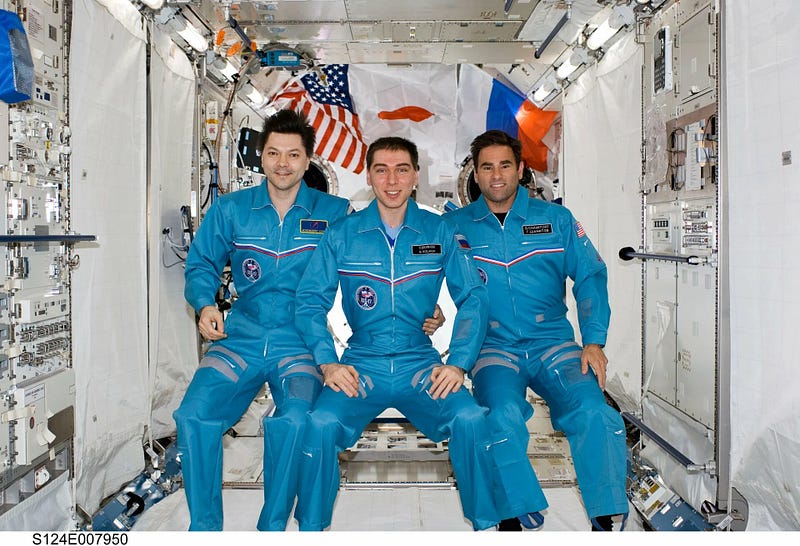# Navigating Weightlessness: Can Astronauts Save Themselves in Space?
Written on
Chapter 1: Understanding Weightlessness
Recently, one of our subscribers posed an intriguing question: what happens if an astronaut finds themselves floating in the middle of a space without any walls to grab onto? Specifically, could they manage to navigate back to safety without help? Let’s explore this fascinating scenario.
Firstly, it’s important to note that there are very few areas on the International Space Station (ISS) spacious enough for an astronaut to become completely isolated from the walls. The Japanese-American Kibo module might allow for such a situation, but escaping without assistance would be nearly impossible.

Imagine, however, that our astronaut somehow finds themselves in the center of a spherical chamber with a radius of 10 meters. Could they reach the wall unaided? The answer is yes, and there are four methods they could utilize to do so.
Section 1.1: Method 1 - The Power of Patience
The design of any inhabited space station ensures that air circulation is constant. Stagnant air could pose a serious risk, so the ventilation systems work tirelessly to maintain airflow. This means that if an astronaut finds themselves adrift, they can simply wait for the air currents to gently guide them back toward a wall.

In essence, by remaining calm and doing nothing, the astronaut will eventually be nudged back to a surface in a matter of hours.
Section 1.2: Method 2 - Swimming in Space
In his literary work “Dunno on the Moon,” Nikolai Nosov describes how an astronaut can use swimming motions to propel themselves in a weightless environment. By mimicking the movements used in water, astronauts can navigate through air, albeit with limited effectiveness.
Unlike swimming in water, each movement yields minimal progress—just a few millimeters at a time. Thus, traversing 10 meters could feel like a grueling journey, akin to swimming several kilometers on Earth.
Section 1.3: Method 3 - Using Momentum
An astronaut can also create movement by throwing an object away from their body. For instance, they could remove a piece of clothing, tie it into a knot, and toss it. According to the principle of conservation of momentum, this action would push them in the opposite direction.

While one shirt might not generate enough force to reach the wall, the astronaut could repeat the process with additional items, like shoes, to gain significant distance. It’s crucial, however, that the throw is aligned with their center of mass; otherwise, they might just spin instead of moving toward the wall.
Section 1.4: Method 4 - Exhaling for Movement
This method is the least efficient but still possible. By taking a deep breath and forcefully exhaling in the opposite direction of their desired movement, the astronaut creates a small amount of thrust that could propel them forward.
For this to work effectively, the direction of the breath must also align with their center of mass.
Chapter 2: Conclusion and Support
If you found this exploration of weightlessness intriguing, please show your support by subscribing to our channel and engaging with our content! Your questions and interests can shape future articles.
Additionally, if you appreciate our work, consider becoming a member for just $5 a month. Your support helps us produce even more engaging and informative content about space!